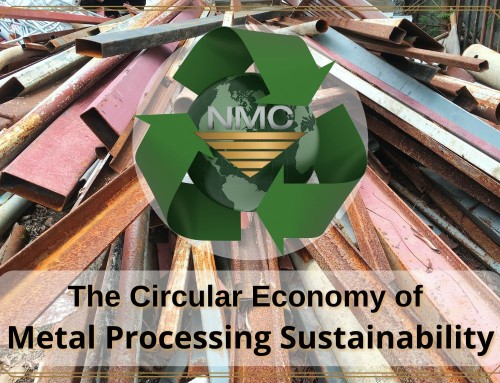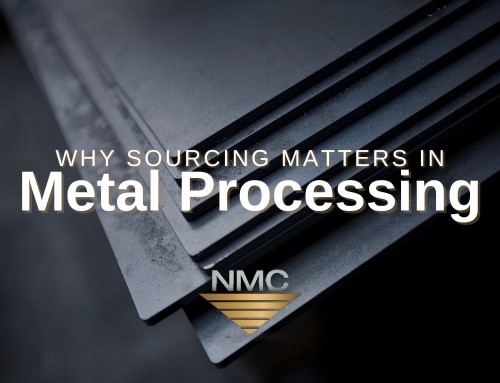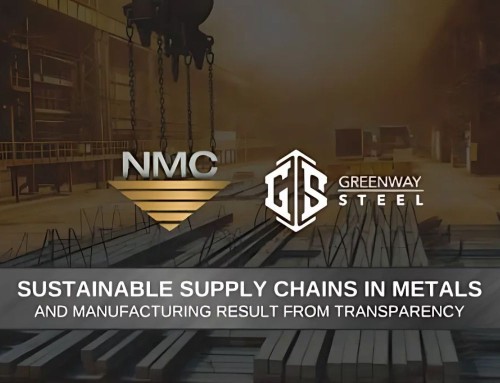What are Press-Hardened Steels (PHS)?
Press-Hardened Steels are Boron added (.001%-.005%) Carbon /Manganese steels that have been in use since the mid 1980’s for automotive body in white construction.
These steels are also known as HF or Hot Formed Steel.
Press Hardened Steel or Hot Formed Steels undergo a unique manufacturing process where the steel is heated to a minimum temperature of 850*C then formed to a final shape in water cooled dies that control the rates of cooling / quench to insure desired properties are met. The high temperature combined with rapid cooling transforms the microstructure to nearly 100% Martensite and very high finished tensile strengths up to 2000 Mpa. This process is commonly referred to as “Hot Stamping”. The finished product qualifies as advanced high-strength steel, and is three times as stable as the material was prior to undergoing the process. It’s strength-to-weight ratio is also vastly increased.
The implementation of press hardening applications and the utilization of hardened steels are promising alternatives for optimizing part geometries with complex shapes with no spring back issues. The Hot Forming process allows for the formation of shapes that cannot be cold stamped with Ultra High Strength steels.
The unique properties of this material combine both complexity and strength – and components made with press-hardened steel can accomplish in one piece what would usually require heavier, thicker parts that are welded together.
The Press-Hardening / Hot Forming process was first put in to practice in the mid 1980’s and is primarily used in the creation of crash-sensitive safety components in automobiles. The parts created with this process meet several of the evolving requirements of the automobile industry, such as weight and cost reduction, as well as reduced environmental impact in its creation.
Since being introduced, Hot Forming has steadily increased in popularity. Recent model year vehicles have seen the percentage of these steels rise to 25% of body in white weight.
PHS / HF Steels can be supplied with coatings that prevent the formation of oxide during the process. The most common of these coatings is Aluminum Silicon (AS) coating, other coatings may include Hot Dipped (GI), Galvannealed (GA) or Zinc Nickle (GP).
These parts are typically used where part stiffness and low deformation are important, typical parts may include.
- A-Pillar
- B-Pillar
- Front / Rear Side Member
- Crossmembers
- Door Ring
Properties of Press-Hardened Steels
The strength of press-hardened steels can reach as high as 2000 MPa (215ksi), with a 1000MPa (145 ksi) yield stress total.
The Press Hardening Process
The two different processes for press-hardening are as follows.
Direct, in which the steel is first superheated in a furnace, formed while it is still hot, and then quenched while within the die. The process goes like this:
- The steel with a ferritic-pearlitic matrix is austenized in a furnace. The blanks are heated up to a high temperature, nearly reaching 1000*C.
- The material is then removed from the furnace and immediately transported to the stamping machinery within 10 seconds of removal
- The die is closed, and the part is formed
- The die is then rapidly quenched. Even transferal of heat within the die is crucial in order to maintain uniformity in the its properties throughout the entire component. The component is cooled at rates greater than 25 K s¹
- The die is opened, and the component is removed.
Indirect, in which the steel is pre-formed and trimmed at room temperature based upon the incoming steel properties prior to Hot Forming. Parts are then heated and areas that are too difficult to cold form are Hot formed to achieve higher strength and final shape.
Because of the time-sensitive conditions of the press-hardening process, robotics is usually employed for the material transfer between the furnace, die, and quenching stations.
As noted in the properties section above, press hardening can achieve strength levels of 2000 MPa, along with highly complex micro-geometry.
CONCLUSION
The press hardening method is altogether economical by creating advanced high-strength steels that are three times as strong as the material used to create it. Beyond that, it can create complex shapes that remove the need to use multiple heavy shapes welded together. Instead, it can a single strong, lightweight, and lower cost automotive component that is ultimately safer, lighter, and smarter than before.
About National Material L.P. – National Material Limited Partnership and its affiliates have a long history of quality and service dating back to 1964. Since its founding, National Material L.P. has grown to over 30 business units and is now one of the largest suppliers of steel in America. The National Material group of industrial businesses consists of the Steel Group, Stainless and Alloys Group, Raw Material Trading Group, Aluminum Group, and Related Operations.
Visit National Material: https://www.nationalmaterial.com or call (U.S.) 847-806-7200.





